Key Points
- Snakes have chromatophores in their skin that produced limited colors that blend to produce hues of brighter, unique coloration.
- The differing coloration of snakes allows them to camouflage to their environment, lure in prey, and even seem more threatening to predators.
- Some of the most vibrantly patterned snakes include the green tree python and the Eastern coral snake.
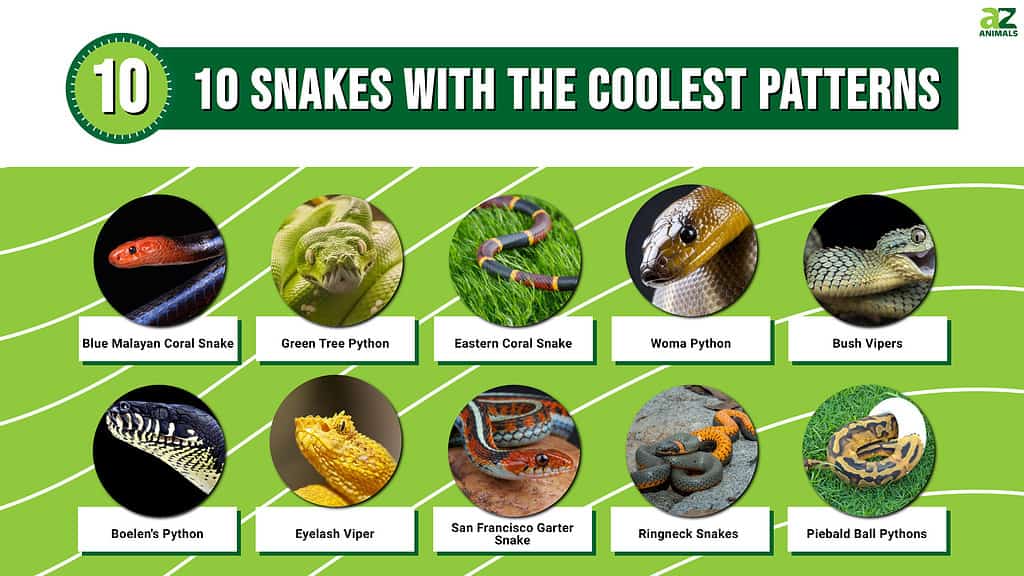
Snakes are quite unique animals, moving quickly without legs, climbing trees, and even changing colors. One of the most amazing things about these reptiles is how many species exist. Currently, we know that there are over 3,000 species of snakes, sporting different scale patterns and colors which makes it easy for us to identify them. While a lot of snakes have dull and unremarkable scales, several species look almost unreal.
According to Bernard Bechtel’s book; Color and Pattern in Snakes, the chromatophores in snake’s skins are limited to the production of basic colors like black, red, yellow, and the reflected hues of iridophores. However, due to the interaction of these colors, we can find other colors and patterns of snake scales such as blue, purple, brown, etc.
So why aren’t all snakes simply brown or green? Well, they have adapted to their environments so that they can camouflage themselves or deter predators. Some coloration patterns can even lure in prey for the snake to easily catch.
In this article, we’ll be exploring nine species of snakes with cool patterns that emphasize just how beautiful and creative nature is.
Blue Malayan Coral Snake
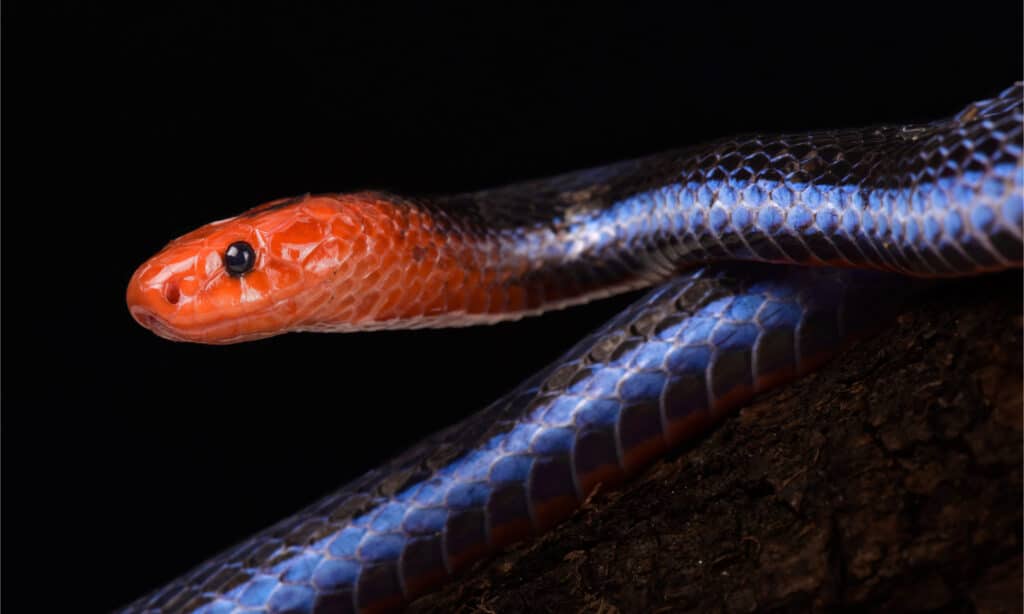
Coral snakes are born brightly and beautifully colored, 7 inches long, and highly venomous.
©reptiles4all/Shutterstock.com
The Blue Malayan Coral Snake’s scales are bold and beautiful. Its scales sport a combination of black and iridescent electric blue, with a bright orange head, belly, and tail. The Blue Malayan Coral Snake is also called the Blue Coral Snake.
This species of snake is just as deadly as it is beautiful. It has extremely long venom glands. Unlike most coral snakes in the family, its venom doesn’t contain neurotoxins. Instead, it contains a unique cardiotoxin that causes spastic paralysis in its prey almost immediately.
Luckily, the Blue Coral snake hasn’t caused a lot of human deaths. However, if you come across one, remember to be careful.
Green Tree Python
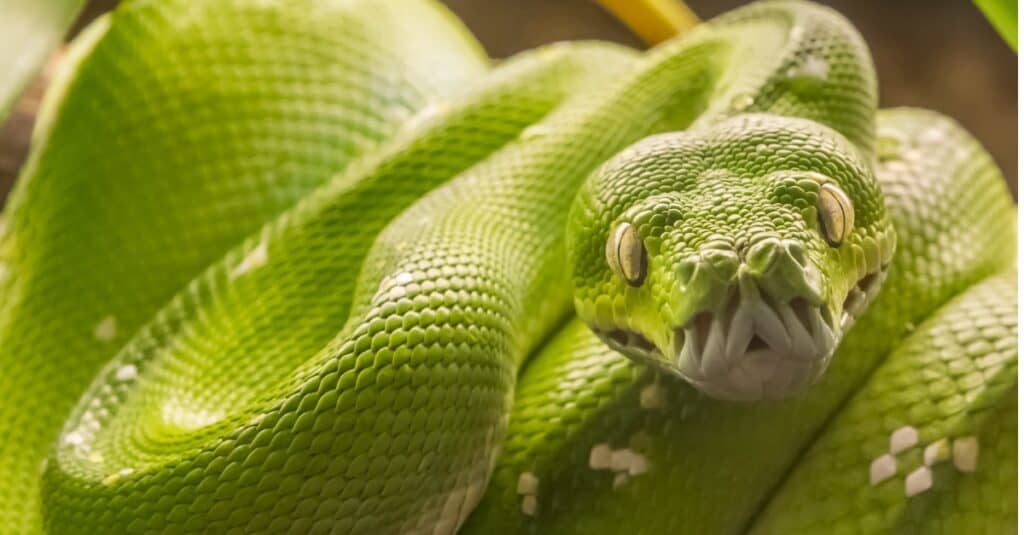
Green Tree Pythons can have red, blue, or yellow scales at birth and turn a vibrant green when they mature.
©iStock.com/venemama
The Green Tree Python combines beautiful green and yellow hues in the most mesmerizing ways. We say “ways” because it seems that each Green Tree Python sports its unique pattern. However, Green Tree Pythons aren’t born green. In their youth, they could be red, bright yellow, or dark brown. They go through color changes as their scales slowly morph into their permanent unique adult colors.
However, even during their youth and color changes, Green Tree Pythons have stunning scales and colors. They color trees beautifully and snake enthusiasts consider it quite a treat to spot Green Tree Pythons, which can grow up to 6.6 feet, curled up around tree branches.
Eastern Coral Snake
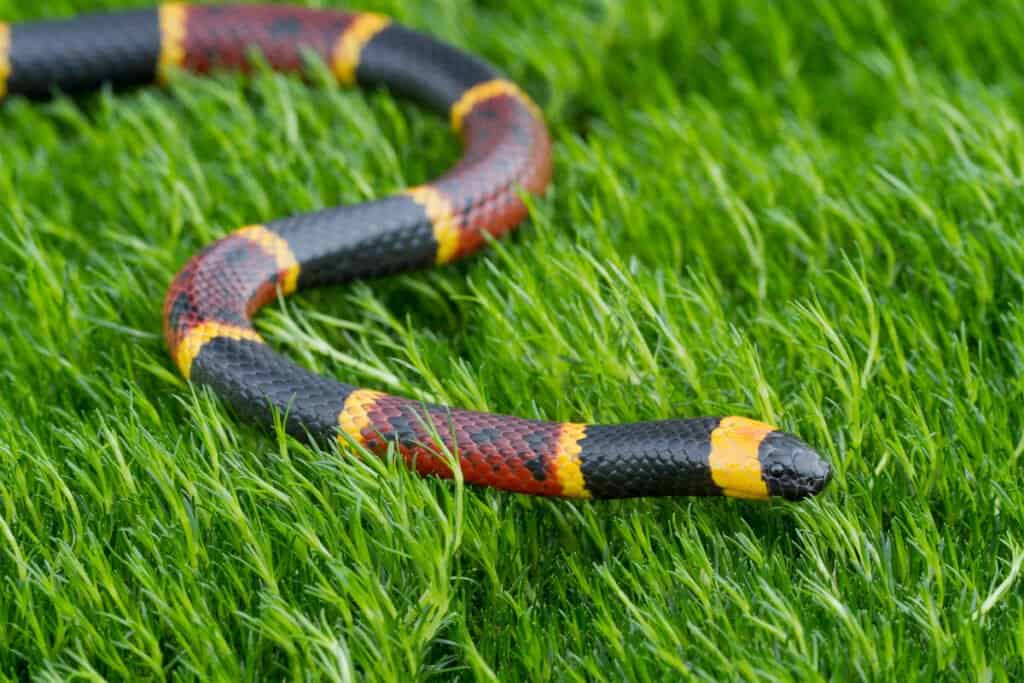
Eastern coral snakes
are not only strikingly beautiful, but they also have the second deadliest venom after the black mamba.
©Mark_Kostich/Shutterstock.com
You know what they say; the most beautiful ones are the deadliest. That is certainly true of the gorgeous Eastern Coral Snake. They have distinctive red, yellow, and black rings all over their bodies. Usually, larger red and black rings are separated by thinner yellow rings.
Eastern Coral Snakes prey on small lizards, frogs, and other snakes. Its venom contains potent neurotoxins that cause rapid paralysis and respiratory failure in its prey. However, that is not to say that their bites are fatal. According to Michael E. Peterson, a recognized expert in the diagnosis and treatment of venomous bites, the severity of the bite is related to the volume of venom injected and the size of the victim.
Woma Python
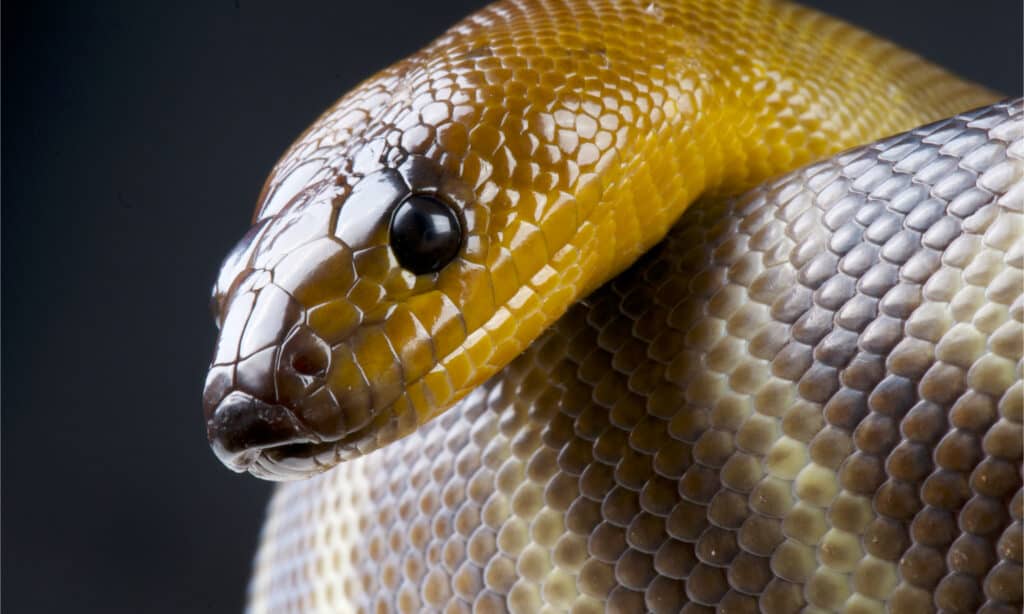
Woma Pythons are also called Ramsay’s Python in honor of Australian zoologist Edward Pierson Ramsay.
©reptiles4all/Shutterstock.com
The Woma Python, for obvious reasons, is also called the Sand Python. This species, commonly found in Western Australia is beautiful and uniquely patterned. They have dorsal scales and small eyes that make them appear cute. Their bellies are often light yellow or cream. Without a doubt, they are eye-catching.
These python species have dark-ringed bands all over their bodies. While the darker colors might be slightly unremarkable, Woma Pythons are often colored in vibrant and beautiful shades of red, pink, and orange.
In earlier ages, Womas preyed on bilbies and made use of their holes for shelter. These days, they prey on lizards and other reptiles and are often fed chicks and mice in captivity.
Bush Viper
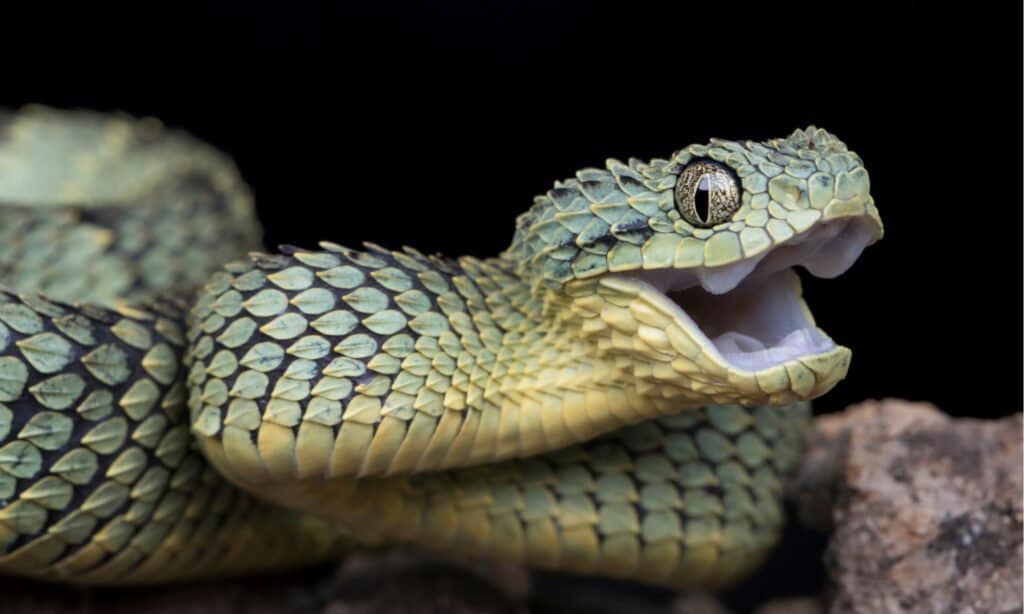
Bush Vipers are seven inches long at birth.
©Mark_Kostich/Shutterstock.com
Also known as Atheris, the Bush Viper is found only in tropical Sub-Saharan Africa. This species has overlapping scales that give a sort of 3D look. It almost looks like what a lot of people imagine a dragon looks like.
Bush Vipers come in a lot of vibrant colors that make their scales even more beautiful. Sadly, these cool snakes are venomous. Their venom contains hemotoxins that cause painful swelling and hemorraging.
Bush Vipers are rather small in size and can only reach a max of 31 inches. Despite this, they are known as ruthless hunters. A Bush Viper will stealthily ambush its prey into a hanging position until the animal dies from its venom. Then, it will swallow its kill whole.
Boelen’s Python
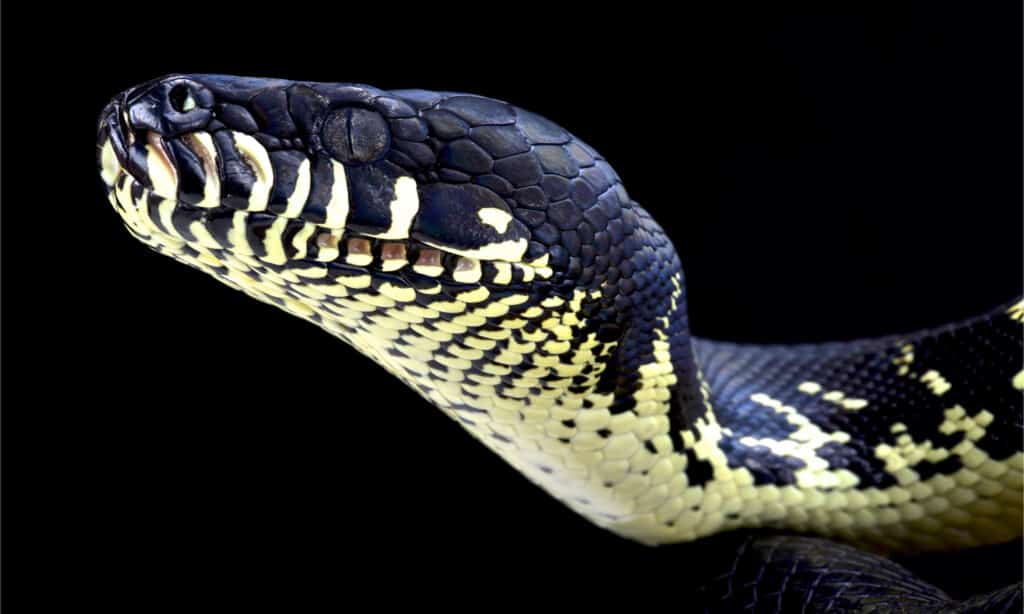
Boelen’s pythons are shy and beautiful creatures with unique patterns.
©reptiles4all/Shutterstock.com
Boelen’s Python is a unique snake species that is stunningly memorable. In adulthood, Boelen’s Pythons have dark bluish-black or purplish-black scales with rainbow iridescence that make them look mind-blowingly cool! They are non-venomous and are mostly found in the mountains of New Guinea where they hunt and feed on small mammals.
Boelen’s Python, also called, Simalia Boeleni can grow up to a whopping 9.8 ft! They make good pets as they adjust well to captivity as well as to being handled and interacted with. Talk about gentle beasts!
Eyelash Viper
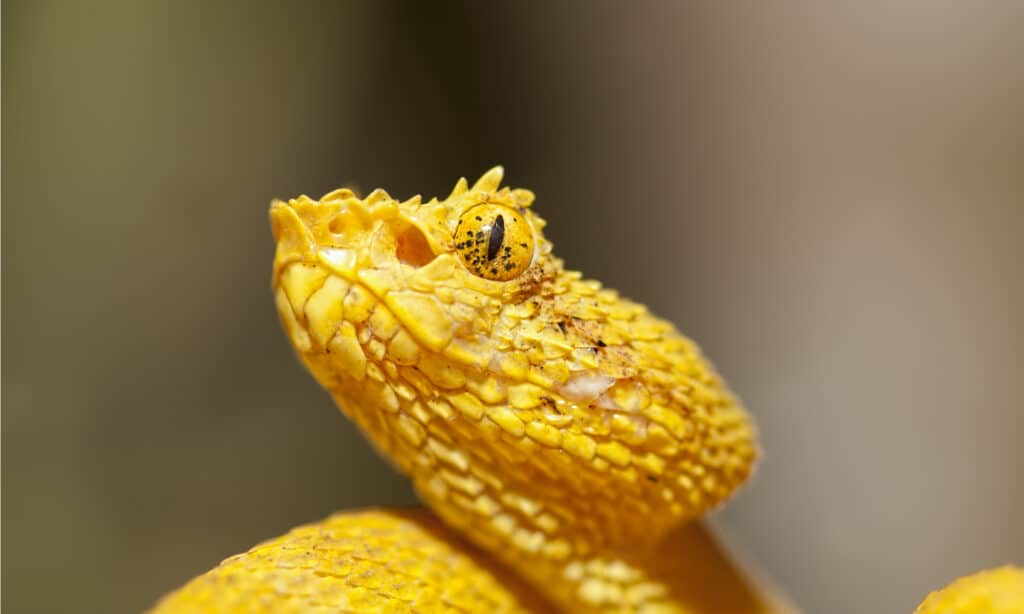
Due to their vibrant and bright yellow colors, Eyelash Vipers can camouflage into bananas!
©Roy H./Shutterstock.com
The species is named for their very unique feature. They have modified scales above their eyes that look a lot like eyelashes. These stunning snakes appear in various unique colors including pink, yellow, brown, green, and red.
Eyelash vipers are native to Central and South America. In the more rural parts of this area, locals believe that these beautiful animals wink at their prey before they attack. While this makes an interesting tale, it is a mere myth as snakes have no eyelids and cannot wink.
San Francisco Garter Snake
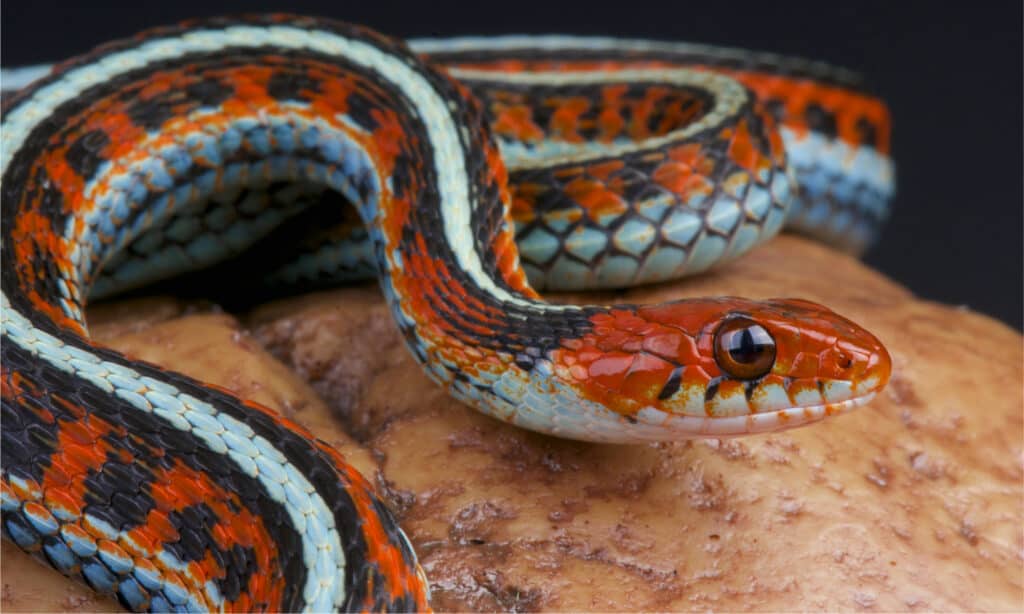
The beautiful San Francisco Garter Snake has keeled dorsal scales.
©reptiles4all/Shutterstock.com
The San Francisco Garter Snake has been voted the most beautiful snake in the world by many snake lovers. While this can be debated, it is a fact that the species is indeed stunningly gorgeous.
They have dorsal scales that are keeled and come in variants of black, red, blue-green, and even orange. San Francisco Garter Snakes are venomous to their prey. However, to humans, it usually causes only mild irritation.
Want to see one? The San Francisco Garter Snake can be spotted in the extreme northern part of coastal Santa Cruz County as well as San Mateo County.
Ringneck Snakes
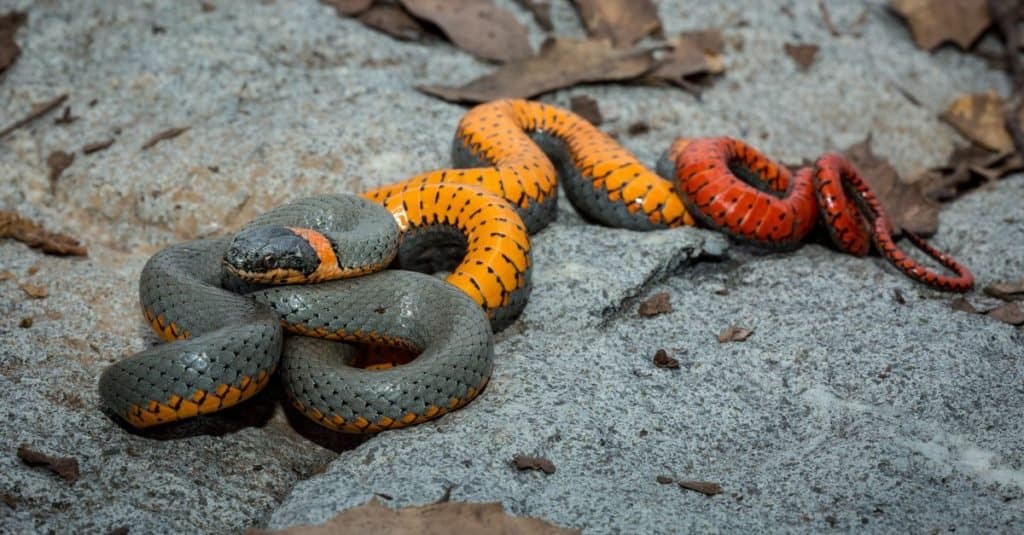
Ringneck snakes are a shy and beautiful nocturnal species.
©Michael K. McDermott/Shutterstock.com
Ringneck snakes are a species commonly found throughout the USA. The species have a distinctive yellow, red, or yellow-orange ring around their neck, hence the name. Their bodies are usually colored smoky black, bluish-gray, and solid olive.
The Ringneck snake has many subspecies that sport unique and colorful patterns. Some popular examples are the San Bernardino ring-necked snake and the Southern ringneck snake. Ringneck snakes are venomous although their venom is not fatal to humans.
Piebald Ball Pythons
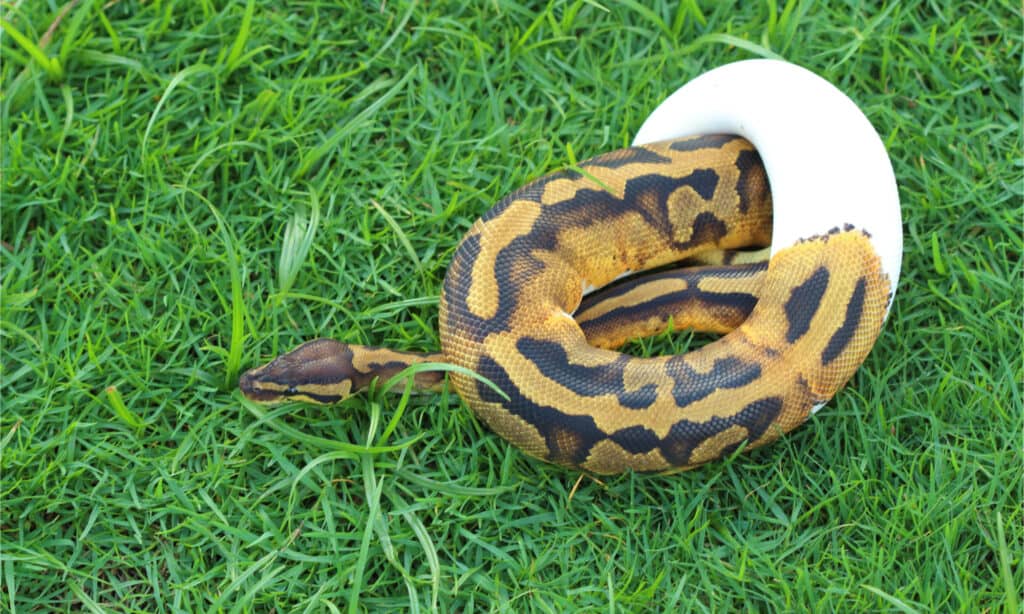
Piebald ball pythons are beautiful and highly docile reptiles.
©Lamnoi Manas/Shutterstock.com
This subspecies is common in West and Central Africa. Piebald Ball Pythons have distinctive white botches on their oreo, pastel, or even banana-colored skins. Piebald Ball Pythons are a rarity. The species’ name is coined from a recessive trait that is partially un-pigmented with variable color and pattern mutation.
Piebald Ball pythons make great pets as they are non-venomous. In the wild, they feed on small mammals and birds which they hunt with amazing skill.
Lizards are Colorful too!
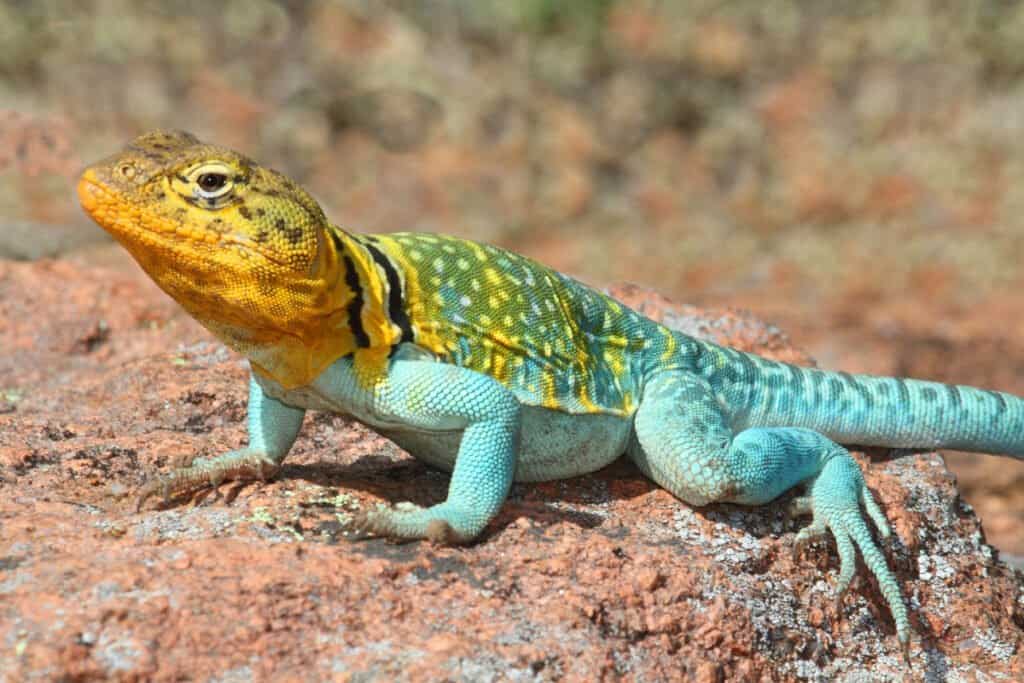
Female collared lizards develop red spots when pregnant, which go away when she lays their eggs
©iStock.com/SteveByland
There are many beautiful lizards in the world, but the collared lizard certainly screams dessert with its turquoise and yellow skin. These lovely lizards are found in sagebrush, desert scrub, and grasslands throughout the western United States and Mexico. If you like southwestern decor – a painting of a collared lizard may offer just the right touch.
Discover the "Monster" Snake 5X Bigger than an Anaconda
Every day A-Z Animals sends out some of the most incredible facts in the world from our free newsletter. Want to discover the 10 most beautiful snakes in the world, a "snake island" where you're never more than 3 feet from danger, or a "monster" snake 5X larger than an anaconda? Then sign up right now and you'll start receiving our daily newsletter absolutely free.
Thank you for reading! Have some feedback for us? Contact the AZ Animals editorial team.








